Advancements in nanohydroxyapatite: synthesis, biomedical applications and composite developments
- PMID: 39776858
- PMCID: PMC11703556
- DOI: 10.1093/rb/rbae129
Advancements in nanohydroxyapatite: synthesis, biomedical applications and composite developments
Abstract
Nanohydroxyapatite (nHA) is distinguished by its exceptional biocompatibility, bioactivity and biodegradability, qualities attributed to its similarity to the mineral component of human bone. This review discusses the synthesis techniques of nHA, highlighting how these methods shape its physicochemical attributes and, in turn, its utility in biomedical applications. The versatility of nHA is further enhanced by doping with biologically significant ions like magnesium or zinc, which can improve its bioactivity and confer therapeutic properties. Notably, nHA-based composites, incorporating metal, polymeric and bioceramic scaffolds, exhibit enhanced osteoconductivity and osteoinductivity. In orthopedic field, nHA and its composites serve effectively as bone graft substitutes, showing exceptional osteointegration and vascularization capabilities. In dentistry, these materials contribute to enamel remineralization, mitigate tooth sensitivity and are employed in surface modification of dental implants. For cancer therapy, nHA composites offer a promising strategy to inhibit tumor growth while sparing healthy tissues. Furthermore, nHA-based composites are emerging as sophisticated platforms with high surface ratio for the delivery of drugs and bioactive substances, gradually releasing therapeutic agents for progressive treatment benefits. Overall, this review delineates the synthesis, modifications and applications of nHA in various biomedical fields, shed light on the future advancements in biomaterials research.
Keywords: bone regeneration; cancer therapy; composite material; dentistry; nanohydroxyapatite.
© The Author(s) 2024. Published by Oxford University Press.
Figures

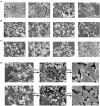
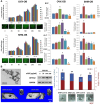
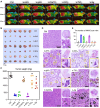

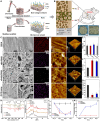
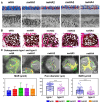

Similar articles
-
Nanohydroxyapatite in dentistry: A comprehensive review.Saudi Dent J. 2023 Sep;35(6):741-752. doi: 10.1016/j.sdentj.2023.05.018. Epub 2023 Jun 7. Saudi Dent J. 2023. PMID: 37817794 Free PMC article.
-
Hydroxyapatite: A journey from biomaterials to advanced functional materials.Adv Colloid Interface Sci. 2023 Nov;321:103013. doi: 10.1016/j.cis.2023.103013. Epub 2023 Oct 7. Adv Colloid Interface Sci. 2023. PMID: 37839281 Review.
-
Content-Dependent Osteogenic Response of Nanohydroxyapatite: An in Vitro and in Vivo Assessment within Collagen-Based Scaffolds.ACS Appl Mater Interfaces. 2016 Sep 14;8(36):23477-88. doi: 10.1021/acsami.6b06596. Epub 2016 Aug 30. ACS Appl Mater Interfaces. 2016. PMID: 27537605
-
Human Periodontal Ligament Stem Cells Transplanted with Nanohydroxyapatite/Chitosan/Gelatin 3D Porous Scaffolds Promote Jaw Bone Regeneration in Swine.Stem Cells Dev. 2021 May 15;30(10):548-559. doi: 10.1089/scd.2020.0204. Epub 2021 Apr 27. Stem Cells Dev. 2021. PMID: 33736461
-
Polysaccharide-Based Composite Systems in Bone Tissue Engineering: A Review.Materials (Basel). 2024 Aug 27;17(17):4220. doi: 10.3390/ma17174220. Materials (Basel). 2024. PMID: 39274610 Free PMC article. Review.
Cited by
-
Nanotechnology in Orthopedic Care: Advances in Drug Delivery, Implants, and Biocompatibility Considerations.Int J Nanomedicine. 2025 Jul 21;20:9251-9274. doi: 10.2147/IJN.S523462. eCollection 2025. Int J Nanomedicine. 2025. PMID: 40727579 Free PMC article. Review.
-
Reverse biogradient biomimetic periosteum with osteogenic and angiogenic characteristics for bone regeneration.Mater Today Bio. 2025 Jun 9;33:101967. doi: 10.1016/j.mtbio.2025.101967. eCollection 2025 Aug. Mater Today Bio. 2025. PMID: 40585030 Free PMC article.
References
-
- Bikiaris ND, Koumentakou I, Samiotaki C, Meimaroglou D, Varytimidou D, Karatza A, Kalantzis Z, Roussou M, Bikiaris RD, Papageorgiou GZ. Recent advances in the investigation of poly(lactic acid) (PLA) nanocomposites: incorporation of various nanofillers and their properties and applications. Polymers (Basel) 2023;15:1196. - PMC - PubMed
Publication types
LinkOut - more resources
Full Text Sources

